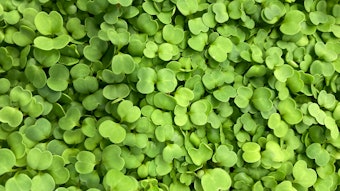Editor’s note: Cosmetics & Toiletries magazine recognizes that the consumer demand for natural products has impacted cosmetics R&D. In response, this new column, “Formulating with Naturals,” has been added to the regular lineup. Look for it quarterly to learn tips for developing products for this market.
When formulating skin care with natural ingredients the first question to ask is: With which definition of natural will the product conform? The definition might be significantly different for the general public than for consumers following lifestyles of health and sustainability (LOHAS) philosophies. However, one may wonder what even these purist consumers know about the myriad of natural and organic certifications out there. This author would venture that most consumers’ identification for natural products would be analogous to Chief Justice Stewart’s definition of obscenity—i.e., “I know it when I see it.”
While market research firms specialized in this market have undoubtedly conducted surveys to understand what consumers view as natural, the current picture is likely quite variable. When, if ever, consumers come to a general consensus and accept one or more of the various competing natural and organic standards, formulators can follow those standards; but right now there are simply too many.
Approaches to Natural
Should the formulator choose ingredients from the multitude given the Ecocert imprimatur, or choose those on the Natural Products Association’s list of 800+ acceptable materials? Or should the formulator instead avoid ingredients found on the Whole Foods list of nearly 400 unacceptable ingredients? Then there are the criteria set forth by NaTrue or the National Sanitation Foundation/American National Standards Institute (NSF/ANSI);1 the European cosmetics standards working group, also known as the COSMOS consortium;2 as well as the Organic and Sustainable Industry Standards (OASIS) industry group in the United States.3 Formulators may just want to follow the guidance of renowned expert Ken Klein and use only materials composed of the first 92 naturally occurring elements. Again, who defines what’s natural?
Further, official governing bodies provide little more guidance. For example, the US Food and Drug Administration (FDA) gives no formal definition for natural except to state that natural ingredients come from natural sources. Regarding foods, the “FDA has not developed a definition for use of the term ‘natural’ or its derivatives,”4 but a product is considered a natural food when it contains no artificial or synthetic ingredients and is only minimally processed according to the 2005 food labeling guidelines.
Verbiage in the European Union’s (EU) REACH regulation states, “A naturally occurring substance is such [that is] unprocessed, or processed by manual, mechanical gravitational means; by dissolution in water; by flotation; by extraction with water; by steam distillation; or by heating solely to remove water, or which is extracted from air by any means.”5
The International Organization for Standardization (ISO) has issued vocabulary for natural aromatic substances in ISO 9235:1997, developed by the essential oil technical committee (TC) 54, and is currently working on ISO/NP 16128, “Cosmetics—Technical definitions and criteria for ‘natural’ and ‘organic’ ingredients and products,” which is at the approved new project stage for ISO TC 217: Cosmetics. Perhaps this is what Julie Tyrrell of NaTrue is referring to on the group’s website when she says, “The criteria for ‘natural’ claims should be finalized in the second half of 2011 and become operational from 2012 based on legislation in EU Parliament Article 20 that restricts false claims for cosmetics.”6
At the Bench: Lipids and Proteins
When formulators finally get to the bench to begin building natural skin care products, they can begin with the basic ingredients for emulsions: emollients, emulsifiers, humectants, thickeners, preservatives and other stabilizers, colors and fragrance. By focusing on these key components, one can identify candidates from their compendium of natural ingredients. Skin care emollients are generally easy since there are many to choose from, although they consist primarily of the natural triglycerides—i.e., fatty oils and butters. Add to this jojoba oil, strictly speaking a liquid wax ester, and squalene, a triterpene precursor of the sterol backbone distilled from olive oil as the major unsaponifiable liquid lipid and the basic ingredient list is all but exhausted.
Oxidatively unstable squalene becomes the elegant branched chain natural hydrocarbon squalane upon hydrogenation, a chemical process that is allowed in many certification schemes. Of course the question then arises: Is this truly natural? Other, lighter hydrocarbon components can be extracted by fractional distillation from natural oils, allowing for the adjustment of feel with mixtures of these oils, butters and other lipids. In general, lower molecular weight and less polar oils with branching and unsaturation give a lighter feel. Unsaturated oils may be challenged by oxidation leading to potential rancidity.
Considering the emulsification mechanism itself, the formulator might ask: What does nature do? How are stable oil and water systems established in nature? Nature works at a molecular level to produce the results observed macroscopically. Tiny, subcellular nanofactories churn chemicals out one molecule at a time that are then harvested by industry in bushel baskets and stainless steel vats. For instance, the olive oil that consumers serve at the dinner table begins as single triglycerides produced by the olive tree’s lipid synthesis pathway.
The stabilization of these two-phase systems in nature usually involves complex combinations of lipids and proteins. Some commercially available natural emulsions include oleosomes—lipid bodies in oil seeds such as safflower that stabilize vegetable oil droplets for seed storage by coating them in oleosin protein. Mammalian milk is also stabilized by proteins, among which are caseins—one of the major milk protein groups present as micelles that disperse milk fat.7
In addition, plant latex, found in more than 20,000 species including guayule, milkweed, poinsettia and many Euphorbiaceae and other botanical families, is stabilized in laticiferous (milk-forming) systems with the help of proteins plus polar lecithin lipids and other components. Studies8 of the Hevea species, the chief rubber-producing plant, show an adsorbed sheath of protein on the surface, stabilizing the particles of isoprenoid oils that comprise rubber’s source hydrocarbons. This protein gives the oil droplets electrophoretic mobility, i.e. a zeta potential, and stabilizes them via surface electrostatic charges. In fact, many proteins are known to have surfactant properties based on the relative hydrophobicity of their amino acid side chains and ionizable groups, a major factor in governing their tertiary structure. Even relatively small hydrolyzed proteins have surface activity that can contribute to emulsion stabilization. Formulators should look both inside and outside of the cosmetic buyer’s guide for proteins to assist in the natural stabilization of dispersed systems.9
If one allows for simple kitchen chemistry processes such as saponification in the development of natural products, a range of soap surfactants based on vegetable oils are also available, most commonly coconut, palm kernel and soy. Use of the strongly alkaline amino acid arginine in the free base form can be an unusual natural alternative to simple mineral alkali or ammonia for neutralization, replacing the much maligned triethanolamine (TEA).10 In addition, waxes such as beeswax and candellila can supply naturally occurring free fatty acids for soap formation since both have acid values near 20; in fact, one company reports that a certified organic emulsion can be prepared using the US Department of Agriculture’s (USDA) NOP beeswax.11
Other natural amphiphiles that can be combined or used individually include the phospholipid lecithins and lanolin, the wool wax-based mixture of sterol esters, plant sterols and saponins, as well as a range of commercial plant sterol and triterpenoid glycosides extracted from soapwort and agave.
Formulators should note that lecithins can have a varied hydrophilic-lipophilic balance (HLB), depending on the degree of hydrolysis and extraction methods, which can be useful for both o/w and w/o emulsions. Unmodified sterols are exclusively w/o stabilizers whereas the saponin glycosides, as their name implies, act like soaps and are used more for foam generation.
Carbohydrates
Natural thickeners and stabilizers from the carbohydrate group of polymers include many of the plant gums of microbial, algal and vascular plant origin. These gums modify the texture and flow properties of emulsions and add to their physical stability. Xanthan gum is a mainstay of food emulsion preparation and is one of the few ingredients named in the USDA’s list of allowed additives to organic-certified processed foods. It imparts the shear thinning rheology with significant yield value necessary to give creams and lotions shelf stability with desired feel at acceptably low use levels of a few tenths percent.
Additional vegetable gums having varying degrees of emulsification, stabilization and viscosity control include tragacanth, scleroglucans, guar, locust bean, carageenan and the alginates, many of which demonstrate synergy, suggesting trials of varying mixtures. Simple insoluble cellulose itself also has been used in the form of citrus fibers and microcrystalline cellulose. Another soluble complex carbohydrate for dispersion enhancement and reduced, more homogeneous emulsion particle sizes is galactoarabinan from the Larch tree. Further, naturals of the mineral variety including swellable clays such as bentonite are useful for their water-structuring ability, forming a hydrated “house of cards” on high shear dispersion. They are also especially effective in combination with natural gums.
Emulsion Construction
The three primary plant metabolite groups described, i.e. lipids, proteins and carbohydrates, provide the scaffold and building blocks for emulsion construction. Some of the starting materials for these polymers also function as humectants in finished products, notably glycerol and amino acids such as pyrrolidone carboxylic acid (PCA) and sugar alcohols such as sorbitol. From the range of secondary plant metabolites identified, mostly polyphenols and terpenoids, the ancillary components of emulsions—colors, fragrances and preservatives as well as some botanical actives, are sourced; botanical actives will be addressed in a future column.
When nature-derived materials are difficult to obtain, nature-identical compounds can be synthesized that function virtually the same—as long as they are not chiral compounds and they are sufficiently purified. The NaTrue organization, for one, goes to great lengths to identify the nature-equivalent preservatives they allow,12 including such organic acids as sorbic, benzoic, salicylic and dehydroacetic and their salts as well as benzyl alcohol.
Allowed organic cosmetic colorants, as listed in the US Code of Federal Regulations (CFR) 21, part 73, include annatto orange-red and beta-carotene, both yellow-orange, oil-soluble carotenoids, as well as carmine, the red polyphenol pigment derived from carminic acid from the cochineal bug. It should be noted that many nature-derived food colorants such as beet extract are only specifically approved for foods, not cosmetics.
To fragrance the emulsion, numerous natural flower and fruit scents are available. From this author’s limited experience in fragrance, chamomile essential oil is suggested as a good starting scent since it works at low levels to mask many base odors with a pleasant and persistent floral note. Natural fragrancing is an art that requires an expert to achieve the right result but suffice it to say it is quite possible to naturally fragrance most products the formulator may envision.
Conclusion
Overall, formulators may limit their range by choosing to go truly natural; however, with some background information and a good deal of experimentation, a variety of effective and aesthetic skin care emulsions can be formulated. When the ingredient range is expanded to naturally derived and nature-identical compounds, the formulator’s palette expands to an even greater variety. In either case, hopefully these strictures placed on formulators will engender innovation rather than stifle creativity in the development of natural products with greater benefits for the end user.
Reproduction of the article without expressed consent is strictly prohibited.
References
Send e-mail to [email protected].
1. www.nsf.org/business/newsroom/articles/0903_n3_nsf305.asp
2. www.cosmos-standard.org/docs/COSMOS-standard-final-jan-10.pdf
3. www.oasisseal.org/OASIS_Standard_100_draft.pdf
4. www.fda.gov/AboutFDA/Transparency/Basics/ucm214868.htm
5. http://guidance.echa.europa.eu/docs/guidance_document substance_ id_en.pdf
6. www.natrue.org/articles-news/read/article/new-legislation-in-europe-to-set-an-end-togreenwashing/
7. Food Chemistry, 3rd edn, H-D Belitz, W Grosch, P Schieberle, eds, Springer-Verlag: Berlin (2004) pp 515
8. J Bonner and AW Galston, The Physiology and Biochemistry of Rubber Formation in Plants, The Botanical Review XIII(10) 543–596 (Dec 1947)
9. XQ Han, Natural raw materials and enzymatic modification of agricultural by-products for protein-based surfactants, in Protein Based Surfactants, ch 2, I Nanna and J Xia, eds, Marcel Dekker, New York (2001) pp 35–36
10. Arginine, company data sheet, www.ajiaminoscience.com/products/manufactured_products/l-amino_acids/L-Arginine.aspx (2007)
11. 90% Organic cream formulation, company website, www.kosterkeunen.com
12. www.natrue.org/fileadmin/natrue/downloads/Criteria_EN_1.9_FINAL.pdf (All websites accessed Dec 7, 2010)
Lab Practical: Using Naturals
- Natural materials have more microbes, and microbial limits for food products are sometimes higher than cosmetics. Be sure to check and control the microbe content.
- Natural materials have a wider variablity. Specifications should be set and supplies should be screened critically.
- Naturals have more natural color and odor. This should be considered when setting formulated product specifications and choosing fragrances and masking agents.
- Naturals can be more heat/processing sensitive. Formulators should be aware of how heat, shear and order of addition affect the final result and formula reproducibility.










